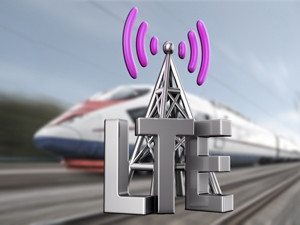
The evolution to next-generation wireless technology long-term evolution (LTE) is in full force, and SA's operators are allocating increasingly more resources to develop their networks and try keep up with the global shift.
As it stands, three-quarters of the countries around the world have firm commitments by their mobile networks to deploy LTE services - that is 150 countries and 497 mobile networks, according to the Global Mobile Suppliers' Association's (GSA's) latest LTE report, released this week.
GSA president Alan Hadden says, globally, LTE coverage is rapidly expanding and LTE subscriptions growth is impressive.
As at the end of the first quarter of 2014, 288 networks had commercially launched in 104 countries and there were an estimated 240 million LTE subscribers worldwide.
The most widely used spectrum in network deployments continues to be 1 800MHz - which is used in 43% of deployments - with the next most popular contiguous bands being 2.6GHz, used in 26.7% of networks in commercial service today. This is followed by the 800MHz band (13.5%) and the advanced wireless services band, used in 8.3% of networks.
The GSA recently said over half of newly-launched user terminals support operation in the 1 800MHz band, which now has the largest device ecosystem.
SA's operators
Vodacom, which was first to the table with an LTE offering in October 2012, is going to divulge more on its LTE plans later this month, at the company's full-year results.
In the meantime, Vodacom spokesperson Richard Boorman notes LTE usage is steadily increasing, as more LTE-capable devices enter the market.
Vodacom commercially launched its LTE 1 800MHz service on 10 October 2012 with 70 base stations in Johannesburg. The operator currently has around 900 LTE base stations.
MTN, which followed with its LTE launch about a month after its red rival, says it has continued rolling out LTE in most areas where re-farming 1 800MHz spectrum is possible.
Krishna Chetty, GM of radio planning and optimisation at MTN SA, says the operator's LTE network covers over three million people, and coverage is still growing. He says MTN has a few hundred-thousand subscribers provisioned on its LTE network.
The speeds achievable on the network, says Chetty, are up to 73Mbps on the downlink and up to 36Mbps on the uplink.
Telkom Mobile's LTE service was commercially launched last year, on 21 April. The operator currently has close to 1 000 integrated LTE sites. Coverage is concentrated in the metros of Johannesburg, Pretoria, Cape Town and Durban.
Cell C is deploying 2.1GHz LTE. On 19 December 2012, a pre-commercial trial service for selected heavy data users began in Cape Town, Durban, Johannesburg and Pretoria.
Dr Marten Scheffer, GM of network engineering at Neotel, says the company currently has 50 LTE sites in Johannesburg and Pretoria, and plans to expand that number "significantly". The CDMA operator commercially launched LTE using 1 800MHz on 21 August 2013. Neotel also owns 3.5GHz spectrum.
Scheffer says Neotel's LTE deployment is being done purely as a fixed broadband solution and is not intended to be delivered over mobile or dongles.
Share